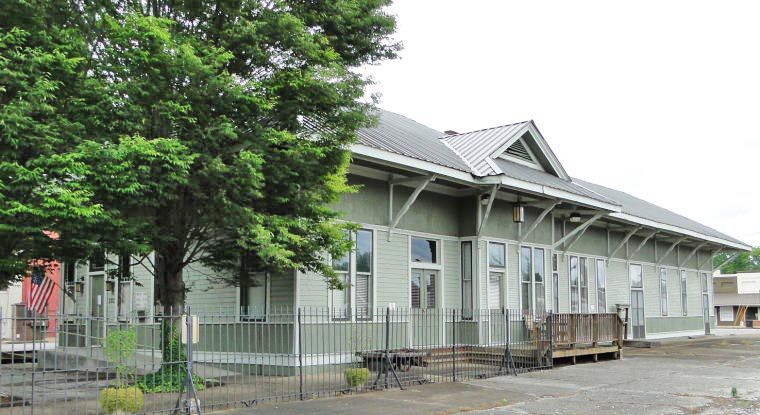With the Silicon Valley Bank rescue, welcome to capitalism without risk
Published 4:26 pm Tuesday, March 21, 2023
In 1994, President Clinton’s certitudes included these: By 2000, America’s high school graduation rate would be 90 percent (it is still not) and students would be among the world’s best in math and science (they are not). Such blithe thinking frequently caused Sen. Daniel Patrick Moynihan to lament “the leakage of reality from American life.” Today, the leakage is a torrent.
Silicon Valley Bank ($209 billion in assets) was America’s 16th largest bank, only 6.5 percent the size of the largest (JPMorgan Chase, $3.2 trillion) and 2.3 percent the size of the four largest combined ($9.1 trillion). Yet SVB’s death-by-mismanagement supposedly posed a “systemic risk” to the financial system? Joe Biden’s administration evidently thinks this system is as perishable as it believes the planet is. If everything is brittle, politicians have endless crises to justify aggrandizing their powers.
The law limits government guarantees to deposits only up to $250,000. Legal limits, however, cannot inhibit a president who thinks he can unilaterally scatter $400-plus billion with student loan forgiveness. So, suddenly there is an implicit guarantee of all deposits. Biden says the bailout of depositors at failed banks will be paid by fees on other banks, and — leakage alert — the cost will not be passed on to anyone.
The Federal Reserve’s too-low-for-too-long interest rates incited and enabled incontinent spending, igniting the inflation that now requires the high interest rates that upended SVB. The New York Times says the Fed will “offer banks loans against their Treasuries and many other asset holdings, treating the securities as though they were worth their original value — even though higher interest rates have eroded the market price of such bonds” (emphasis added). And the Fed might now abandon, as too risky, its actual job: fighting inflation with higher interest rates.
Here comes capitalism without risk: profits private, losses socialized. Americans shall forgo the creativity of capitalism’s “creative destruction” by avoiding the destruction. Do not worry about moral hazard (incentives for risky behavior): Government will make Capitalism Without Hazard an entitlement for the innumerable entities government will deem too big to fail, for “systemic” reasons. This socialization of risk approaches a semi-nationalization of banking, so: Why should bank CEOs be paid more than civil servants?
The not-so-“transitory” inflation the government unleashed has increased for a third consecutive month; its annualized rate is triple the 2 percent target the Fed’s fine-tuners seek. SVB’s executives were inattentive to the predictable inflation that predictably punished their prediction of low interest rates for years to come.
Biden’s dreams of government growth require of Americans vast trust in government. This, despite evidence that:
Leaders of the National Institutes of Health worked surreptitiously to discredit the Great Barrington Declaration, in which epidemiologists correctly argued against blunderbuss lockdowns, and for pandemic responses targeting the most vulnerable, who did not include children. Disregarding their recommendations cost staggering sums and scarred a generation with learning loss.
The Centers for Disease Control and Prevention gave teachers unions cover as they avoided teaching and extorted benefits on spurious “public health” grounds. Government colluded with, and pressured, social media to suppress pandemic “misinformation,” as government defined this by its shifting criteria regarding the efficacy of masks, the necessity of commercial and school closures, a possible lab-leak origin of the coronavirus, and more.
If the news media wonders why news consumers are disenchanted, note that in a span of the past two months readers/viewers have been pelted with stories about climate change causing California existential perils from drought and from flooding caused by saturating rains. The “existential threat” Biden says fossil fuels pose to Earth terrifies him less than a gallon of gas costing perhaps $2 more than 1950’s $2.97 (in today’s dollars). Then, cars averaged only 15 miles per gallon compared with 25 mpg today, so effectively gas is not much, if at all, more expensive today. Nevertheless, the prospect of voters fuming at gas pumps surely explains Biden’s decision to permit more Alaska drilling. Even this sensible policy, emerging from a fog of feckless rhetoric, invites cynicism.
Last week, a Republican evidently seeking Biden’s office made a momentous foreign policy pronouncement for (you cannot make this up) Tucker Carlson to provide to Fox News viewers: Ron DeSantis termed Russia’s attempted murder of Ukraine “a territorial dispute.” In 1938, Neville Chamberlain expressed similar thinking about Adolf Hitler’s “dispute” with Czechoslovakia: “A quarrel in a faraway country between people of whom we know nothing.”
Enough. Even more catastrophic than Americans’ withdrawal of confidence from their leaders and institutions, public and private, are the events that justify it.





